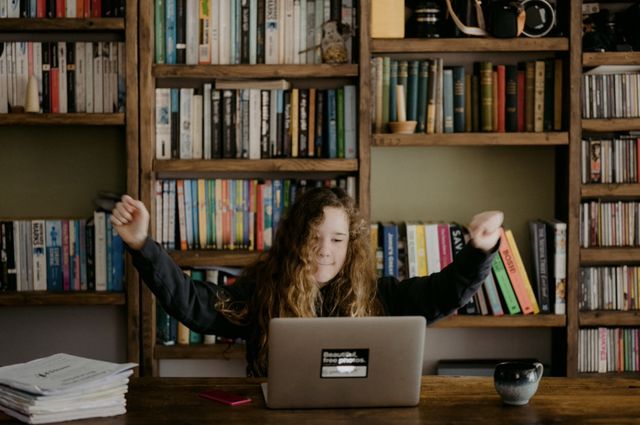Blended learning, and why it is better than traditional education
- Category: Pics |
- 28 May, 2021 |
- Views: 1679 |

Traditional full-time education develops communication skills and helps to socialize. Online learning – helps to be disciplined and accelerate the process of acquiring knowledge. Researchers and teachers believe that in the future, these educational models will merge. The mixed approach is called blended learning.
What is blended learning?
The term blended learning originated in the corporate environment about 30 years ago. Back in the 1980s, Boeing was improving the skills of its employees on the job by providing the employees with CDs and video records. The idea was picked up by business schools, whose students are busy people and can not sit for hours in the classroom.
It seemed that technology would stifle the traditional model of learning. Why waste time on the way to school when you can listen to a lecture online? Why sit in the library, if any information can be found in two clicks on the Web? Why participate in a seminar if everything can be discussed in a chat?
But that didn't happen. Neither teachers nor students are ready to give up live communication. No matter how convenient e-learning is, it does not provide the level of development of speech and socio-cultural skills that full-time education provides.
That is why blended learning is actively developing in highly educated societies.
Blended learning is an educational concept that combines traditional learning with online learning.
The student receives knowledge both in person, communicating live with peers and teachers, and independently, using modern technologies.
This is not an ordinary class: the student learns some of the material at home with gadgets in his hands at a convenient pace. This is not an online learning approach, where the student receives almost no help from the teacher and appears at school only for exams. This is not a one-on-one study with a computer: you need to be part of a group and develop with it.
The term blended learning became widely used after the 2005 book The Handbook of Blended Learning: Global Perspectives, Local Designs by Curtis Bonk and Charles Graham. And although in the specialized literature there are other names with slightly different wording (hybrid learning, combined learning, mixed-model, or else), the essence is the same.
Blended learning is a mix of traditional and e-learning that combines the best of both forms.
Blended learning models
The most active mixed learning is developing in the United States. If in 2000 the technology of blended learning was available only for 45 thousand American schoolchildren, then in 2009 their number reached three million. By 2025, 50% of all school lessons in the United States are planned to be mixed.
There are six models of integration of mixed learning.
Face-to-Face Driver. Learning material is passed from teacher to students in classroom sessions. Electronic resources are used only to consolidate and deepen knowledge.
Online Driver. The student watches webinars, solves online tasks, takes online tests, that is, learns the material remotely. But if necessary, he can meet with the teacher and get some homework help.
Flex model. The main part of the program is presented online. The teacher acts as a coordinator, tracking topics that are difficult to understand so that they can then be discussed in physical class in a group or individually.
Rotation model. Full-time and online training alternate: first, students learn the material independently online, then together with the teacher in the classroom, and vice versa.
Self-blend. Students go through the program as usual. However, if certain subjects are particularly interesting for them, you can take additional online classes for them.
Online Lab. Students conduct experiments and solve tasks, and tests online, but within the walls of their alma mater and under the supervision of a teacher. If students have a hard time with writing assignments, they can contact essayassistant.org.
In their pure form, these models are rarely used. Usually, they are combined. For example, Face-to-Face with Flex: in addition to attending classes, students independently study online, and then discuss incomprehensible points with the teacher.
Benefits of blended learning
According to The Sloan Consortium, more than 60% of American students believe that blended learning is more effective than conventional learning. This is easy to believe when you look at the advantages of blended learning.
Flexibility of the educational process. It can involve any number of teachers and students. Teachers can give master classes even while on another continent, and you can access e-learning materials at any time and from anywhere.
Freedom of learning. When taking exams on a computer, it is difficult to write off or face bias. Also, communication technologies allow students and teachers to constantly maintain feedback, which means that they can better understand each other.
Individual approach. Teachers can vary the pace and volume of learning material development depending on the personal characteristics of students. And the combination of different models allows each student to develop exactly in the direction that he is interested in.
Development of independence. The student must manage their time effectively, be able to plan, and be disciplined. Otherwise, with a mixed system, success will not be achieved.
Increased motivation. Many people love gadgets and services. In the XXI century, people do not just want to learn — they want it to be interactive and interesting, and they are happy to take part in webinars, conduct discussions on forums, and master various programs.

